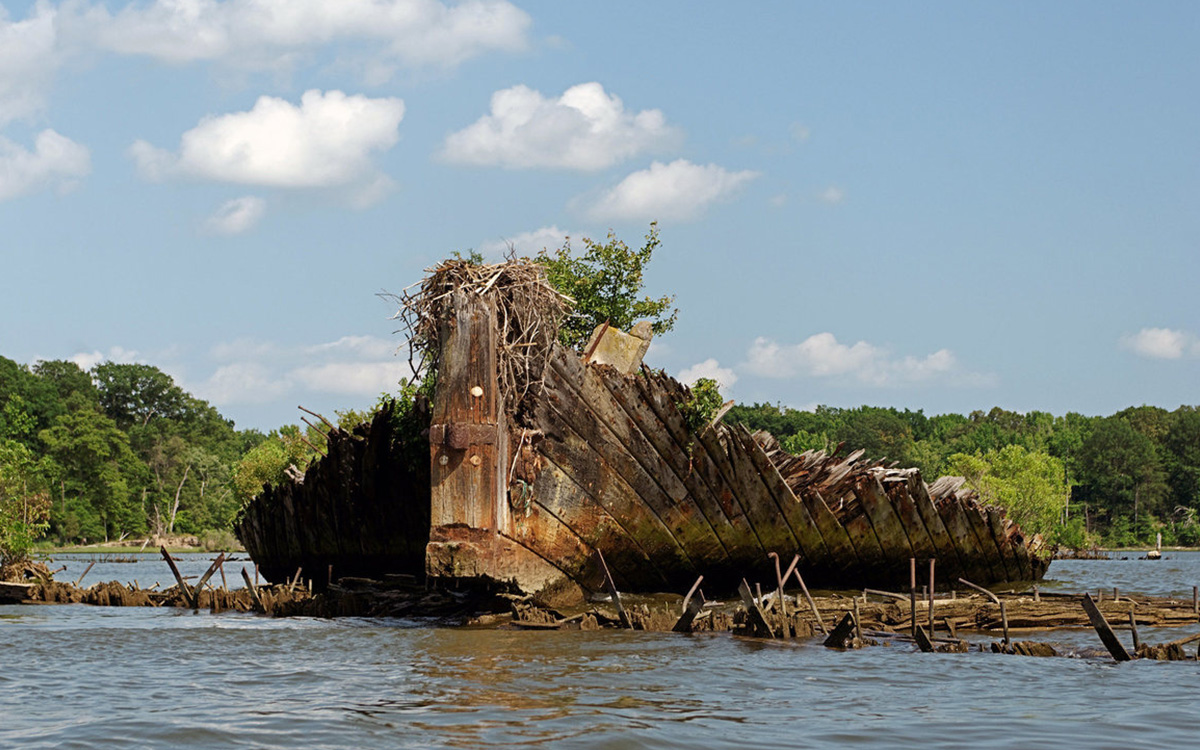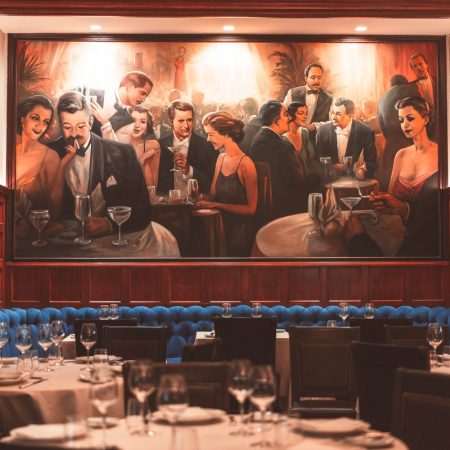Earlier this month, America designated a National Marine Sanctuary for the first time in almost 20 years.
Much like its companions in the Marine Sanctuary network, from Thunder Bay in the Great Lakes to the Olympic Coast in western Washington, Mallows Bay-Potomac River is a system of diverse waterways with a preponderance of local vegetation, birds and fish. Only, the new site’s got an additional, far less common feature: 118 WWI-era U.S. Emergency Fleet Corporation steamships.
In 1917, the U.S. Shipping Board ordered the construction of 1,000 vessels in 18 months, to support the American effort against German U-boats. By the time the fleet was finished (well below the goal of 1,000 and built with reinforced wood), the war was nearly over; World War I ended officially on November 11th, 1918. The American government sold the ships or somewhere under $500k to a salvage company, which dragged them to a shore in Maryland, along the Potomac.
The goal was to burn the ships and collect scrap metal, but the task was never finished. Less than half of the 200 ships were lit for parts, and once the salvage company gave it up as a bad job, the hulking wooden remains stayed put in the shallows of Mallows Bay. Almost a hundred years later, the Potomac has gone full Jumanji on many of these ships, turning the Ghost Fleet into a system of strangely shaped “islands,” most of them covered in swampish shrubs, which are beloved by nesting osprey and red-winged blackbirds.
And now, the designation. It won’t be official until November 22nd, following a 45-day congressional review period, but it’s likely it will go through, meaning the unlikeliest of habitats will be protected and funded by the county, the state, and National Oceanic and Atmospheric Administration. For those used to birding, kayaking or fishing in the region, nothing will really change. But the area will become more safe (climbing on the ships, obviously, is a bad idea), and benefit economically and scientifically from the awareness the designation brings.
Editor’s Note: RealClearLife, a news and lifestyle publisher, is now a part of InsideHook. Together, we’ll be covering current events, pop culture, sports, travel, health and the world. Subscribe here for our free daily newsletter.
Thanks for reading InsideHook. Sign up for our daily newsletter and be in the know.


















